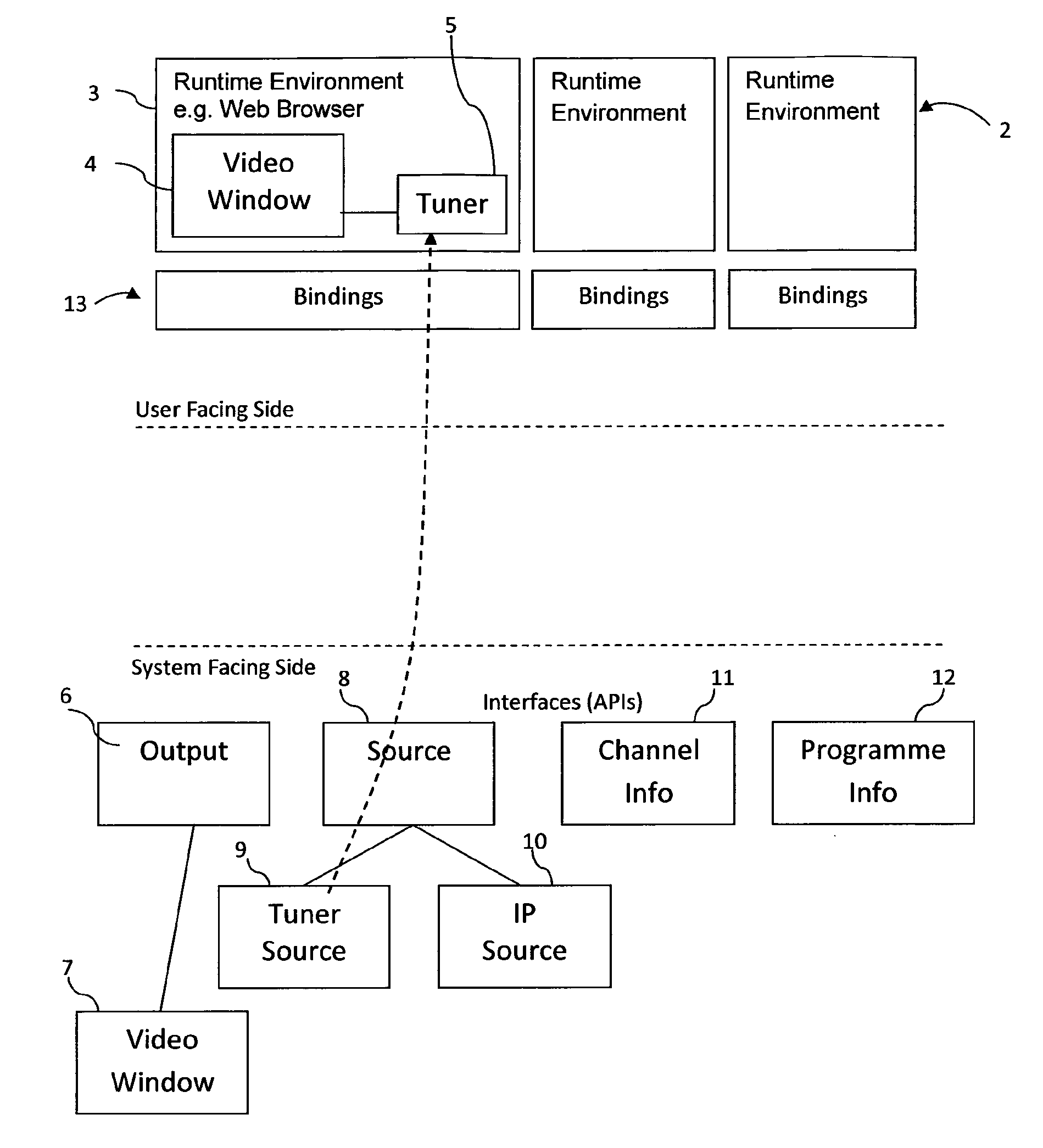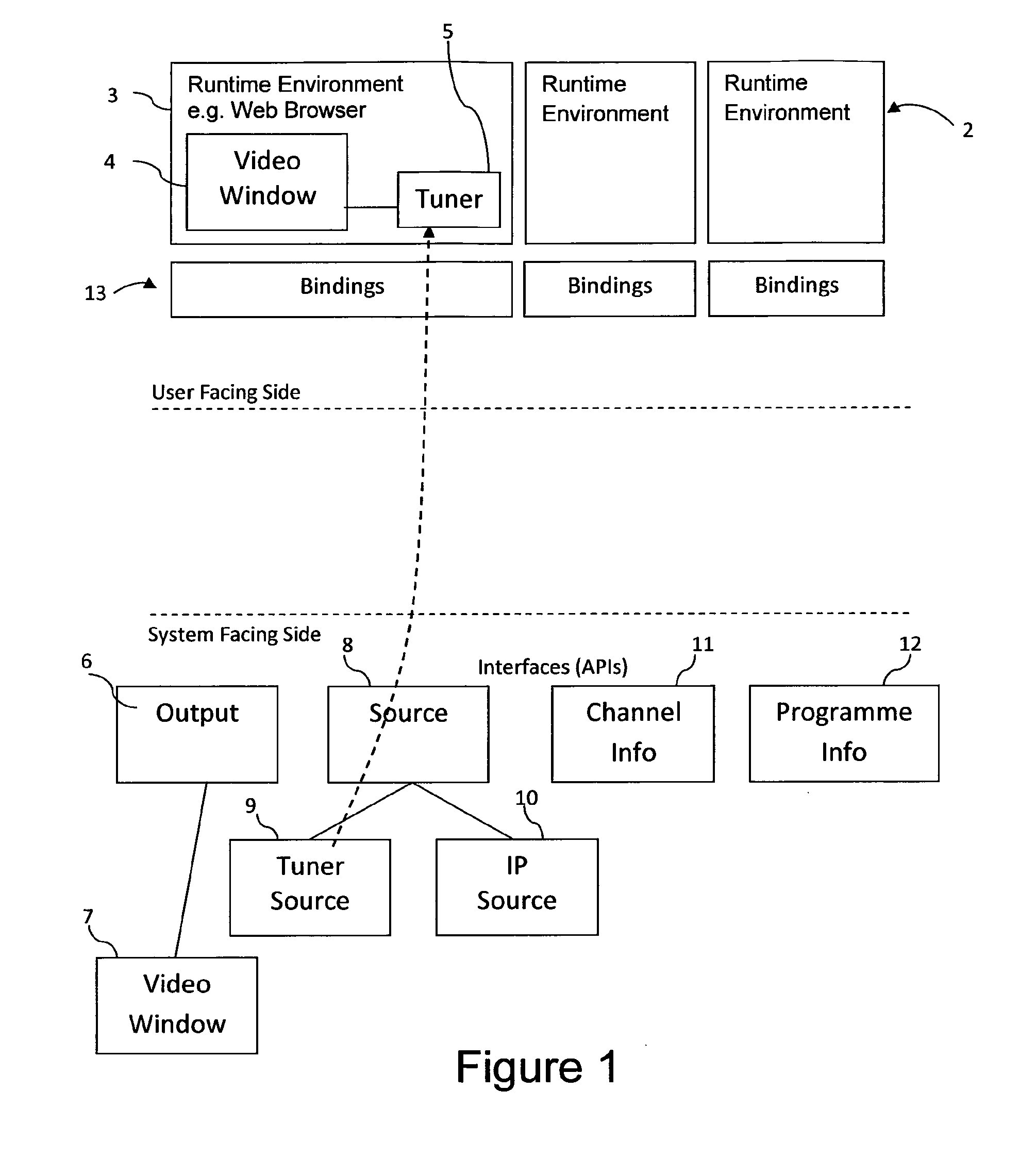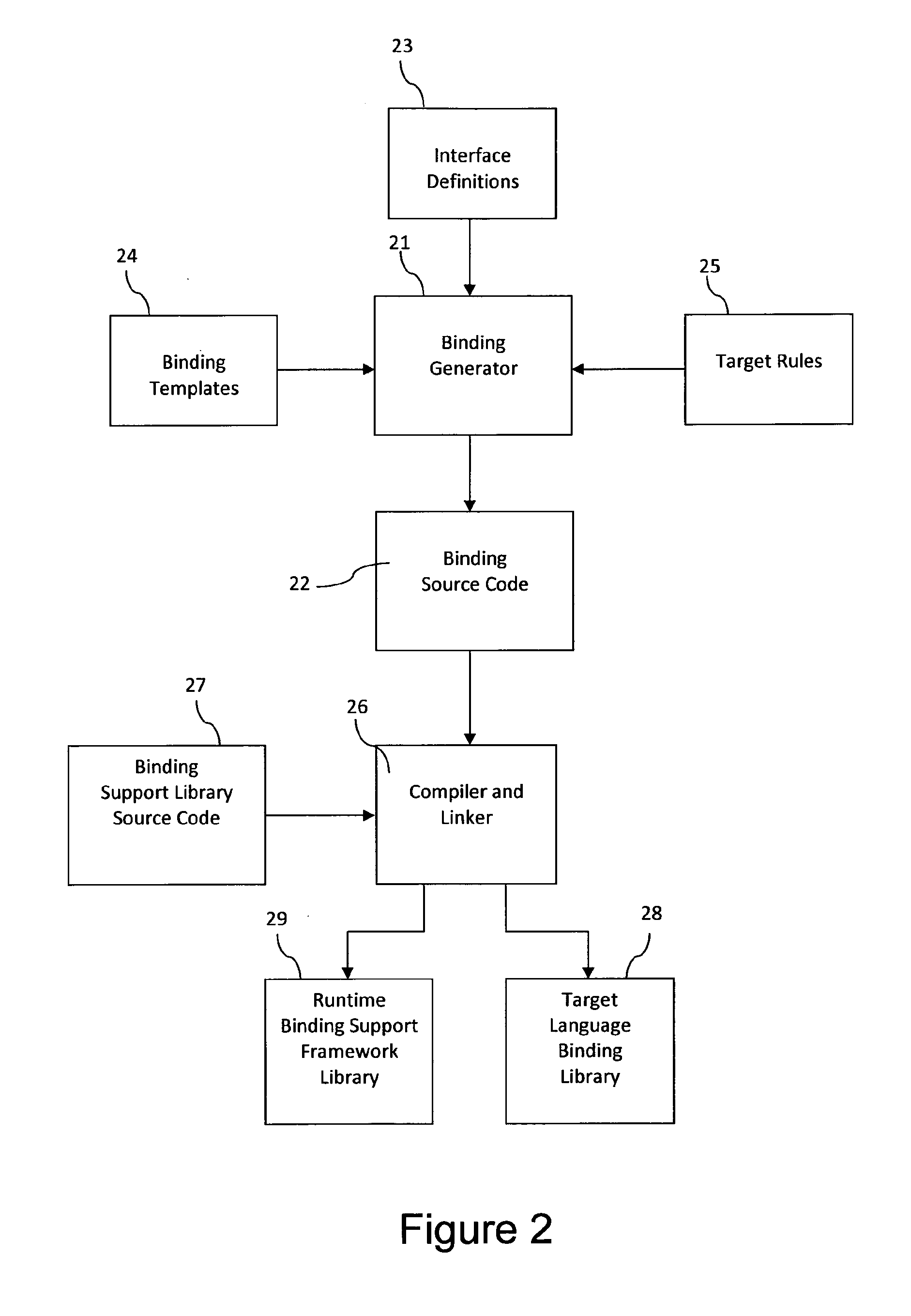Mechanism for dynamically resolving polymorphic type dependencies between parallel heterogenous run-time environments
a run-time environment and polymorphic type technology, applied in the direction of instrumentation, program control, electric digital data processing, etc., can solve the problems of program failure, inability to know which sub-class of objects is always possible, and inability to resolve to the particular sub-class
- Summary
- Abstract
- Description
- Claims
- Application Information
AI Technical Summary
Benefits of technology
Problems solved by technology
Method used
Image
Examples
Embodiment Construction
[0020]To aid understanding, a brief glossary is provided below for aspects of terminology used in this description. This is not intended to limit the scope of the invention in any way, and is merely intended as an aid for the reader.
[0021]Object—In object oriented programming languages, an object is a logical entity that possesses characteristics representing its role in the run-time environment. Characteristics include functions and methods that can be called by other objects, as well as properties such as variables and constants that define the state of the object.
[0022]Method—A method is a subroutine that is exclusively associated either with a class (called class methods or static methods) or with an object (called instance methods).
[0023]Run-time Environment—Provides software services for processes or programs while a computer is running. It may pertain to the operating system itself, or the software that runs on top of it. Example Run-time Environments include Web Browsers and...
PUM
 Login to View More
Login to View More Abstract
Description
Claims
Application Information
 Login to View More
Login to View More - R&D
- Intellectual Property
- Life Sciences
- Materials
- Tech Scout
- Unparalleled Data Quality
- Higher Quality Content
- 60% Fewer Hallucinations
Browse by: Latest US Patents, China's latest patents, Technical Efficacy Thesaurus, Application Domain, Technology Topic, Popular Technical Reports.
© 2025 PatSnap. All rights reserved.Legal|Privacy policy|Modern Slavery Act Transparency Statement|Sitemap|About US| Contact US: help@patsnap.com



